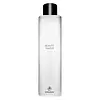What's inside
What's inside
 Key Ingredients
Key Ingredients

 Benefits
Benefits

 Concerns
Concerns

No concerns
 Ingredients Side-by-side
Ingredients Side-by-side

Water
Skin ConditioningRosa Damascena Flower Water
MaskingHamamelis Virginiana Water
AstringentButylene Glycol
HumectantPropanediol
SolventPEG-7 Caprylic/Capric Glycerides
EmulsifyingPentylene Glycol
Skin ConditioningCitrus Aurantium Dulcis Fruit Extract
MaskingXylitol
HumectantCitrus Aurantium Bergamia Fruit Oil
MaskingOlea Europaea Fruit Oil
MaskingCitrus Aurantium Dulcis Oil
MaskingCitrus Grandis Peel Oil
MaskingLavandula Angustifolia Oil
MaskingCedrus Atlantica Bark Oil
MaskingPelargonium Graveolens Flower Water
AstringentJasminum Officinale Oil
MaskingIllicium Verum Fruit/Seed Oil
MaskingArtemisia Absinthium Extract
Skin ConditioningRose Flower Oil
MaskingFerula Galbaniflua Resin Oil
AntimicrobialThuja Occidentalis Leaf Extract
AntioxidantEucalyptus Globulus Leaf Extract
PerfumingLavandula Angustifolia Flower
Skin ConditioningMelaleuca Alternifolia Leaf Extract
PerfumingMelissa Officinalis Leaf Extract
Skin ConditioningMentha Piperita Leaf Extract
Skin ConditioningMentha Rotundifolia Leaf Extract
TonicMentha Spicata Flower/Leaf/Stem Extract
MaskingOriganum Majorana Leaf Extract
AntiseborrhoeicOriganum Vulgare Leaf Extract
Skin ConditioningPelargonium Graveolens Extract
MaskingRosmarinus Officinalis Leaf Extract
AntimicrobialThymus Vulgaris Leaf Extract
Skin ProtectingGlycerin
HumectantDecyl Glucoside
Cleansing1,2-Hexanediol
Skin ConditioningPEG-40 Hydrogenated Castor Oil
EmulsifyingPPG-26-Buteth-26
Skin ConditioningSodium Chloride
MaskingEthylhexylglycerin
Skin ConditioningSodium Citrate
BufferingCitric Acid
BufferingOctanediol
Copaifera Officinalis Resin
MaskingProtease
ExfoliatingAlcohol Denat.
AntimicrobialAlcohol
AntimicrobialPhenoxyethanol
PreservativeWater, Rosa Damascena Flower Water, Hamamelis Virginiana Water, Butylene Glycol, Propanediol, PEG-7 Caprylic/Capric Glycerides, Pentylene Glycol, Citrus Aurantium Dulcis Fruit Extract, Xylitol, Citrus Aurantium Bergamia Fruit Oil, Olea Europaea Fruit Oil, Citrus Aurantium Dulcis Oil, Citrus Grandis Peel Oil, Lavandula Angustifolia Oil, Cedrus Atlantica Bark Oil, Pelargonium Graveolens Flower Water, Jasminum Officinale Oil, Illicium Verum Fruit/Seed Oil, Artemisia Absinthium Extract, Rose Flower Oil, Ferula Galbaniflua Resin Oil, Thuja Occidentalis Leaf Extract, Eucalyptus Globulus Leaf Extract, Lavandula Angustifolia Flower, Melaleuca Alternifolia Leaf Extract, Melissa Officinalis Leaf Extract, Mentha Piperita Leaf Extract, Mentha Rotundifolia Leaf Extract, Mentha Spicata Flower/Leaf/Stem Extract, Origanum Majorana Leaf Extract, Origanum Vulgare Leaf Extract, Pelargonium Graveolens Extract, Rosmarinus Officinalis Leaf Extract, Thymus Vulgaris Leaf Extract, Glycerin, Decyl Glucoside, 1,2-Hexanediol, PEG-40 Hydrogenated Castor Oil, PPG-26-Buteth-26, Sodium Chloride, Ethylhexylglycerin, Sodium Citrate, Citric Acid, Octanediol, Copaifera Officinalis Resin, Protease, Alcohol Denat., Alcohol, Phenoxyethanol
 Reviews
Reviews

Ingredients Explained
These ingredients are found in both products.
Ingredients higher up in an ingredient list are typically present in a larger amount.
1,2-Hexanediol is a synthetic liquid and another multi-functional powerhouse.
It is a:
- Humectant, drawing moisture into the skin
- Emollient, helping to soften skin
- Solvent, dispersing and stabilizing formulas
- Preservative booster, enhancing the antimicrobial activity of other preservatives
Citric Acid is an alpha hydroxy acid (AHA) naturally found in citrus fruits like oranges, lemons, and limes.
Like other AHAs, citric acid can exfoliate skin by breaking down the bonds that hold dead skin cells together. This helps reveal smoother and brighter skin underneath.
However, this exfoliating effect only happens at high concentrations (20%) which can be hard to find in cosmetic products.
Due to this, citric acid is usually included in small amounts as a pH adjuster. This helps keep products slightly more acidic and compatible with skin's natural pH.
In skincare formulas, citric acid can:
While it can provide some skin benefits, research shows lactic acid and glycolic acid are generally more effective and less irritating exfoliants.
Most citric acid used in skincare today is made by fermenting sugars (usually from molasses). This synthetic version is identical to the natural citrus form but easier to stabilize and use in formulations.
Read more about some other popular AHA's here:
Learn more about Citric AcidEthylhexylglycerin (we can't pronounce this either) is commonly used as a preservative and skin softener. It is derived from glyceryl.
You might see Ethylhexylglycerin often paired with other preservatives such as phenoxyethanol. Ethylhexylglycerin has been found to increase the effectiveness of these other preservatives.
Glycerin is already naturally found in your skin. It helps moisturize and protect your skin.
A study from 2016 found glycerin to be more effective as a humectant than AHAs and hyaluronic acid.
As a humectant, it helps the skin stay hydrated by pulling moisture to your skin. The low molecular weight of glycerin allows it to pull moisture into the deeper layers of your skin.
Hydrated skin improves your skin barrier; Your skin barrier helps protect against irritants and bacteria.
Glycerin has also been found to have antimicrobial and antiviral properties. Due to these properties, glycerin is often used in wound and burn treatments.
In cosmetics, glycerin is usually derived from plants such as soybean or palm. However, it can also be sourced from animals, such as tallow or animal fat.
This ingredient is organic, colorless, odorless, and non-toxic.
Glycerin is the name for this ingredient in American English. British English uses Glycerol/Glycerine.
Learn more about GlycerinSodium Citrate is the sodium salts of citric acid. In skincare, it is used to alter pH levels and acts as a preservative.
Its main functions are to maintain the pH of a product and neutralize metal ions.
The acidity of our skin is maintained by our glands and skin biome; normal pH level of skin is slightly acidic (~4.75-5.5).
Being slightly acidic allows our skin to create an "acid mantle". This acid mantle is a thin barrier that protects our skin from bacteria and contaminants.
Learn more about Sodium Citrate